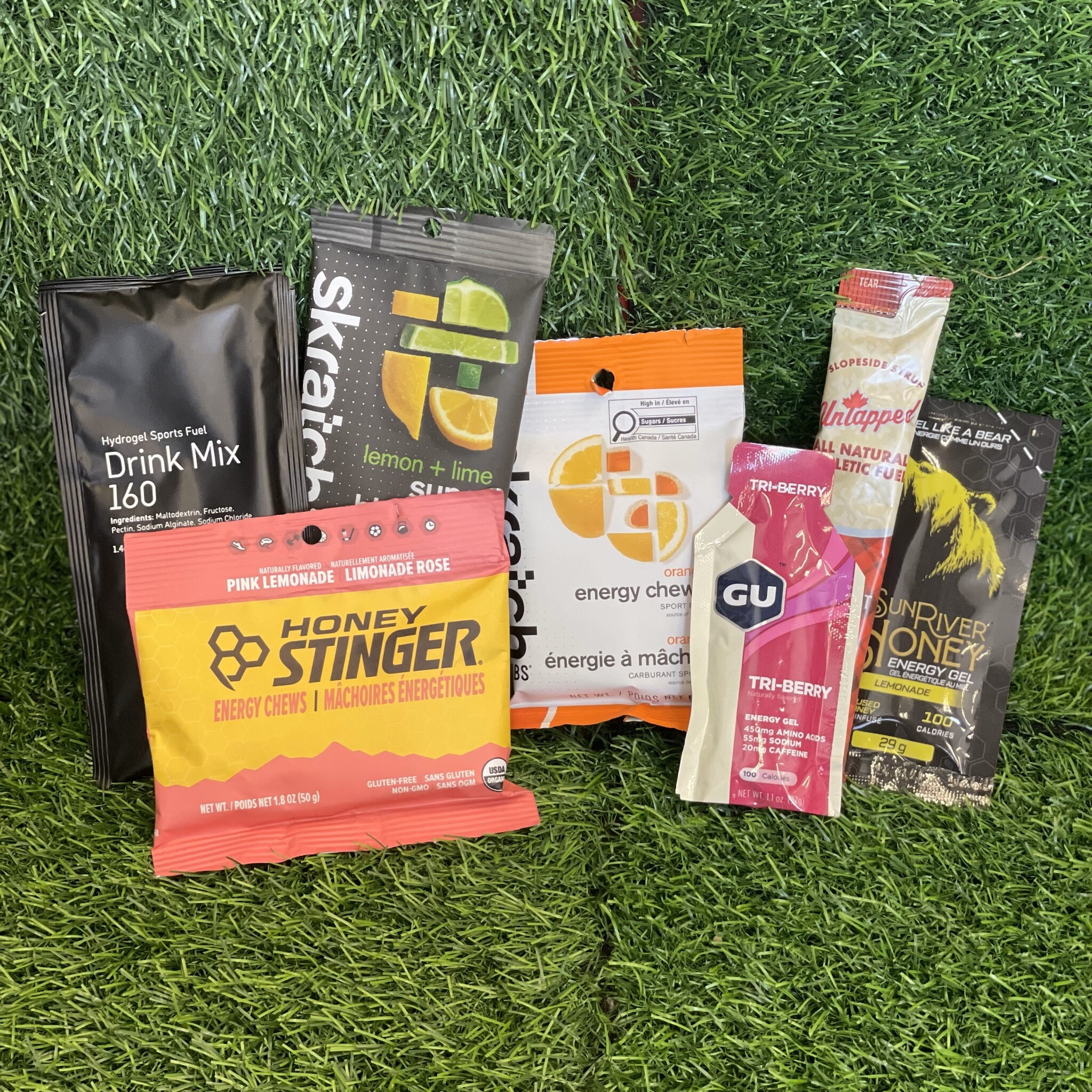Nutrition for Runners 101

Introduction to fueling on-the-go for runners!
For runners, the right nutrition is not just essential before and after a workout; it’s crucial during the run itself. As we push our limits, our bodies require a steady supply of energy to optimize performance and stave off fatigue. Understanding the nuances and different approaches to fueling on-the-go can be confusing and even downright overwhelming. We’ve put together this short article to help you navigate the world of nutrition on-the-go.
For starters, we need to differentiate between the different types of nutrition you might find at your local run shop or retailer. These can be broken down into three categories: carbohydrates, electrolytes, and protein. Each one serves a very specific purpose in relation to running or other endurance activities. Carbohydrates are what your body breaks down into sugars to provide your muscles with energy, electrolytes are responsible for maintaining hydration levels and allowing your muscles to relax after contracting, and protein is needed to repair and rebuild your muscle fibers that are damaged during your run.
For this article, we will be focusing primarily on carbohydrates as these are what are predominantly consumed while being active. Carbohydrates for runners come in three different formats: gels, chews, and drink mixes. These options make it easier to ingest, reducing or removing the need to chew it before swallowing. The added benefit of the drink mix option is that they dissolve in water, so you’ll also get some rehydration along with your carbs, but by and large, all three options will accomplish the same thing, the choice will mostly come down to your preference.
In terms of when and how often someone should be fueling on-the-go, the most basic rule of thumb is every 45 minutes. If you’re out there for less than an hour you likely won’t need it, but once you start hitting runs longer than that, you should be taking something every 45 minutes. The goal is to keep your sugar levels nice and consistent from start to finish, don’t wait until you feel that bonk, because it does take time for your snack to digest, enter your bloodstream, and reach our muscles. How much you should be taking in terms of grams of carbs per serving is more of a case-by-case basis. Current research seems to indicate that the more you take in, the better, but the more carbs you consume, the higher the risk of getting an upset tummy. Some elite ultra marathoners report taking in close to 200 grams of carbs per hour! That is a ton, and an amount 99.9% of people would not be able to tolerate or need that much to perform at their best. Eliud Kipchoge, the first person to run a sub-2 hour marathon, was ingesting about 80 grams of carbs per hour during his marathon race. Higher carb consumption is something you can train your gut for, similarly to weightlifting at the gym; you shouldn’t try to lift a weight heavier than you can move because you’ll obviously fail (wreck your stomach), but if you practice with smaller weights (fewer grams of carbs), and gradually increase that amount over time, you’ll be able to lift (eat) more than you ever could.
The best advice we can give to someone new to the idea of taking fuel on the go, is to experiment with different types and brands. We cannot stress enough how important it is to not try something new on race day! You’re playing with fire when you do that and might ruin your entire race and waste all the hard training you put into getting to that start line. If you plan on relying on the race’s aid stations, do some research ahead of time and find out what they’ll be providing and purchase some to practice with ahead of time. Your digestive system works quite differently when you’re running compared to when you’re at rest; your sympathetic nervous system redirects energy usage away from digestion and to your working muscles. This often means you become more prone to getting an upset stomach, so by testing out different ones, you can hopefully find one that works best for you. It might be best to try out new stuff out on your shorter runs, that way if it doesn’t agree with your stomach, you don’t need to suffer through the rest of your long run. We also do not suggest mixing and matching different things, that way if your stomach does rebel, you’ll know what caused it.
You can often find carbohydrate fuel sources with caffeine added to them. There are many studies which show caffeine can improve your performance by enhancing alertness, and even reducing the perceived amount of effort you are exerting. Caffeine does also greatly increase your risk of getting an upset stomach, especially while on the run, so tread carefully and consume in moderation. On average, an 8 oz cup of coffee contains about 95 mg of caffeine, this can be a good benchmark for habitual coffee drinkers to base their caffeine consumption off for the run.
While we hope you have gained some valuable insights and strategies for fueling during your runs, it’s important to remember that individual nutritional needs can vary greatly. We encourage readers to use this information as a general guide and to consult a nutritionist or registered dietitian for personalized advice tailored to your specific goals, lifestyle, and health conditions. Professional guidance can help you develop a nutrition plan that works best for you, ensuring optimal performance and well-being.

Comments
Be the first to comment...